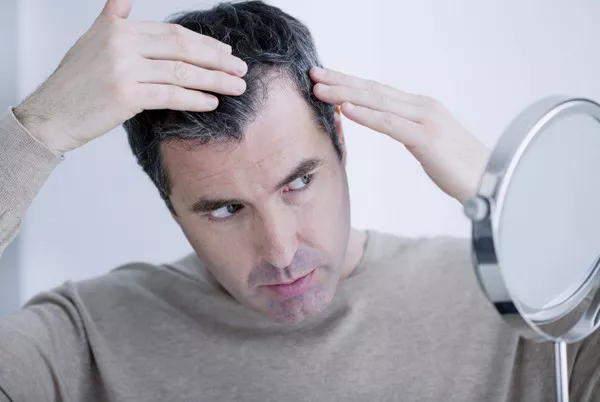Hair loss is a common concern among men, and while traditional treatments like minoxidil and finasteride have been effective for many, there is a constant quest for more advanced and innovative solutions. In recent years, several advanced therapies for male hair regrowth have emerged, offering promising results and new hope for those seeking to restore their hair. In this article, we will explore some of the latest breakthroughs and innovations in hair regrowth therapies. Additionally, we’ll address frequently asked questions to provide comprehensive information on this exciting topic.
I. Platelet-Rich Plasma (PRP) Therapy
Platelet-Rich Plasma (PRP) therapy is a regenerative treatment that has gained popularity for hair regrowth. In PRP therapy, a small amount of the patient’s blood is drawn, processed to concentrate the platelets, and then injected into the scalp.
Platelets contain growth factors that stimulate hair follicles and promote hair regrowth. PRP therapy is minimally invasive and typically requires multiple treatment sessions to achieve optimal results. It is suitable for men in the early stages of hair loss or as a complementary treatment alongside other therapies.
II. Low-Level Laser Therapy (LLLT)
Low-level laser therapy (LLLT) is a non-invasive treatment that uses low-level lasers or light-emitting diodes (LEDs) to stimulate hair follicles and promote hair growth. It is available in various forms, including laser caps, helmets, and combs for home use.
LLLT devices are designed to improve blood circulation to the scalp and provide the hair follicles with the energy needed for growth. Consistency is key when using LLLT, and results may take several months to become noticeable. Many men appreciate LLLT for its convenience and minimal side effects.
III. Hair Growth Dermal Fillers
Hair growth dermal fillers are a relatively new approach to hair restoration. These fillers contain biocompatible substances, such as hyaluronic acid, that are injected into the scalp. They work by adding volume to the scalp tissue, which can stimulate hair follicles and promote hair growth.
This innovative therapy is suitable for men with thinning hair who may not be candidates for hair transplantation or prefer non-surgical options. Results are temporary and may require periodic touch-up sessions.
IV. Hair Cloning and Regenerative Medicine
Hair cloning is an emerging field of regenerative medicine that holds immense promise for hair restoration. This technique involves cloning hair follicles to produce a large number of healthy follicles for transplantation.
While hair cloning is still in the experimental stages and not widely available, it represents a groundbreaking advancement in the field of hair restoration. As research progresses, it may become a viable option for men with advanced hair loss.
V. Advanced Hair Transplantation Techniques
Traditional hair transplantation has evolved with the development of advanced techniques such as follicular unit extraction (FUE) and robotic hair transplantation. These techniques offer more precise and minimally invasive options for hair restoration.
FUE involves harvesting individual hair follicles from the donor area and transplanting them to the recipient area, leaving minimal scarring. Robotic hair transplantation uses robotic technology to enhance the precision and efficiency of the procedure.
VI. FAQs on Advanced Therapies for Male Hair Regrowth
Q1: Who is a suitable candidate for PRP therapy?
PRP therapy is suitable for men in the early stages of hair loss or those looking to enhance the results of other hair regrowth treatments. Consult with a healthcare provider or dermatologist to determine if PRP therapy is right for you.
Q2: How long does it take to see results with LLLT devices?
Results with LLLT devices can vary from person to person, but it often takes several months of consistent use to notice improvements in hair growth and density. Patience and adherence to the recommended regimen are essential.
Q3: Are hair growth dermal fillers permanent?
Hair growth dermal fillers provide temporary results and may require periodic touch-up sessions to maintain the desired effect.
Q4: When will hair cloning become widely available?
Hair cloning is still in the experimental stages of research and development. It may be several years before it becomes widely available as a hair restoration option.
Q5: Are advanced hair transplantation techniques more expensive than traditional methods?
Advanced hair transplantation techniques like FUE and robotic transplantation may be more expensive than traditional methods due to the specialized technology and expertise required. The cost can vary depending on factors like the extent of hair loss and the clinic’s location.
In conclusion, the field of hair restoration has seen remarkable advancements in recent years, offering men more innovative and effective options for hair regrowth. These advanced therapies, including PRP therapy, LLLT, hair growth dermal fillers, and hair cloning, hold great promise for addressing male hair loss. While some of these treatments are still in the experimental stages or may require ongoing research, they represent exciting breakthroughs that offer hope to men seeking to restore their hair and confidence. If you are considering any of these advanced therapies, consult with a qualified healthcare provider or hair restoration specialist to determine the most suitable option for your unique needs.

